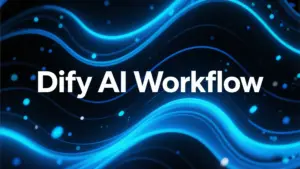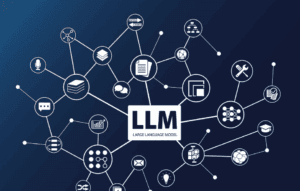Introduction: The Need for Private AI Knowledge Bases for Enterprise and AI Review
In the age of AI and Large Language Models (LLMs), businesses are increasingly turning to advanced solutions for managing knowledge and reviewing documents. Traditional knowledge bases often face challenges like:
- Information Silos: Data scattered across various systems, making unified retrieval difficult.
- Low Query Efficiency: Traditional keyword matching cannot meet the needs of natural language queries.
- Data Security Risks: Using public cloud AI may lead to sensitive data leakage.
- High Manual Review Costs: Content review requires substantial manpower and is prone to subjective judgment.
By combining Dify and DeepSeek, combined with RAG (Retrieval-Augmented Generation) technology, businesses can create a private knowledge base and AI document review system, tackling these issues head-on.
Technical Advantages of Dify and DeepSeek
Dify: AI Knowledge Base and Application Platform
Dify is an open-source framework for developing large model applications, supporting rapid construction of AI knowledge bases, intelligent Q&A, chatbots, and more. Its core capabilities include:
- Private Deployment: Supports running on local servers or enterprise intranet environments, ensuring data security.
- Supports Multiple LLM Models: Can integrate DeepSeek, GPT-4, Claude, Llama 2, and other large language models.
- Customizable Prompts and Multi-Turn Dialogue: Enterprises can adjust AI response methods for specific scenarios.
- RAG Technology Support: Combines vector databases to enable AI to generate more accurate responses based on retrieved information.

DeepSeek: China Large Language Model
DeepSeek is a China-trained LLM that offers several benefits, especially for enterprises requiring high data security:
- Domestic Control: Supports private deployment, suitable for scenarios with high data security requirements.
- Optimized Chinese Understanding: Performs better than many overseas large models in Chinese NLP tasks.
- Strong Long Text Processing Capability: Suitable for document parsing, compliance review, and more.
Creating an Enterprise Private Knowledge Base Using Dify and DeepSeek
Why Enterprises Need a Private Knowledge Base?
Enterprises manage vast amounts of documents daily, including:
- Product manuals and technical documentation
- Regulatory compliance documents
- Internal policies and procedures
- R&D documents and patent information
If this knowledge cannot be effectively retrieved or organized, it can lead to:
- Employees Struggling to Find Correct Information, affecting work efficiency.
- Increased Redundant Work, as the same questions need to be answered repeatedly.
- Low Data Utilization, failing to maximize the value of knowledge assets.
Optimizing the Knowledge Base with RAG (Retrieval-Augmented Generation)
Traditional knowledge base retrieval methods primarily rely on keyword matching, which has the following shortcomings:
- Inability to Understand User Question Context, leading to imprecise retrieval results.
- Difficulty in Handling Complex Queries, such as "How does this technical specification compare to last year?"
- Inability to Generate Summary Answers, requiring users to read multiple documents to organize information.
RAG (Retrieval-Augmented Generation) effectively improves knowledge retrieval quality by combining semantic search and LLM generation capabilities.
RAG Working Principle:
- User inputs a query (natural language question).
- Conducts semantic retrieval through the vector database to find relevant documents.
- Inputs the retrieved text segments into the DeepSeek LLM to generate the final answer.
flowchart LR A[User Question Input] --> B[Vector Database Semantic Search] B --> C[Retrieved Relevant Documents] C --> D[DeepSeek Processing] D --> E[Final Answer]
Knowledge Base Construction Process
- Data Import: Import enterprise documents (PDF, Word, Markdown, databases) into Dify.
- Text Parsing: Use NLP techniques for formatting, deduplication, and segmentation.
- Vector Storage: Create vector indexes using FAISS/Milvus.
- Intelligent Retrieval: Combine semantic search and DeepSeek to generate the final answer.
Code Example: Building RAG with Dify + DeepSeek
Here’s a sample code using FAISS vector database + DeepSeek LLM:
from langchain.embeddings import OpenAIEmbeddings
from langchain.vectorstores import FAISS
from deepseek import DeepSeekModel
# Initialize DeepSeek LLM
deepseek_llm = DeepSeekModel(model_name="deepseek-chat")
# Load knowledge base data
docs = ["Enterprise knowledge base document content 1", "Enterprise knowledge base document content 2"]
# Create vector database
vector_db = FAISS.from_texts(docs, OpenAIEmbeddings())
# User input question
query = "How to optimize enterprise data management processes?"
# Retrieve relevant content from vector database
retrieved_docs = vector_db.similarity_search(query)
# Generate the final answer using DeepSeek
response = deepseek_llm.generate(query, context=retrieved_docs)
print(response)AI Document Review System with Dify + DeepSeek Integration
Challenges in Document Review
Traditional manual review methods face the following issues:
• Time-Consuming: Manual review of large volumes of documents requires significant time.
• High Subjectivity: Different reviewers may have inconsistent judgment standards.
• Scalability Issues: Review rules are fixed and hard to adapt to changing regulations or corporate policies.
How Does AI Improve the Accuracy of Legal Document Review?
Dify + DeepSeek can be used for intelligent document review, mainly reflected in:
• Automatic Identification of Violations (e.g., sensitive words, confidential information).
• Judging Document Compliance Based on Semantic Understanding, rather than relying solely on keyword matching.
• Supporting Batch Processing, significantly reducing manual review costs.
AI Review Process
- Document Parsing: Convert PDF/Word/Excel documents into analyzable text.
- Sensitive Content Detection: Use NLP to identify violations, confidential information, etc.
- Deep AI Review: Combine DeepSeek for contextual understanding and compliance judgment.
- Output Review Results: Generate compliance scores, mark violations, and provide modification suggestions.
flowchart LR A[Document Upload] --> B[Text Parsing] B --> C[Sensitive Information Detection] C --> D[DeepSeek AI Semantic Analysis] D --> E[Compliance Score and Review Suggestions]
Code Example: Intelligent Document Review
Here’s a sample code for document review using Dify + DeepSeek:
from deepseek import DeepSeekModel
# Initialize DeepSeek review model
deepseek_audit = DeepSeekModel(model_name="deepseek-audit")
# Example file content
file_content = "This contract involves confidential information and must not be leaked..."
# AI review
audit_result = deepseek_audit.analyze(file_content)
# Output review results
print(audit_result)
Private Deployment Solutions on Enterprise Data Security
For sensitive information, deploying AI solutions on private servers or cloud environments ensures data security. Options include:
Private Deployment Methods
- Local Server Deployment
• Suitable for enterprise intranet environments, with no data transmission outside.
• Relies on Docker/Kubernetes for container management, supporting auto-scaling.
• Requires GPU servers to accelerate DeepSeek model inference.
- Private Cloud (Aliyun, Tencent Cloud, Huawei Cloud, etc.)
• Suitable for large enterprises, supporting remote work.
• Combines cloud databases with edge computing to improve query efficiency.
• Requires strict access control (e.g., IAM permission management).
- Hybrid Cloud Architecture (Edge Computing + Cloud AI Training)
• Suitable for applications requiring high real-time performance, such as intelligent customer service and automated review.
• Runs Dify inference services on edge devices, syncing only review results to the cloud.
Technical Architecture
Here’s the private architecture of Dify + DeepSeek in an enterprise intranet environment:
graph TD; A[Enterprise Intranet] -->|Request| B[Dify Application] B -->|Call| C[DeepSeek AI] B -->|Retrieve| D["Vector Database (FAISS/Milvus)"] C -->|Generate| E[Intelligent Answer] D -->|Return| E E -->|Response| A
This architecture achieves:
• Dify as the LLM scheduling platform, managing AI tasks.
• DeepSeek for model inference, supporting knowledge Q&A and content review.
• Vector database for storing knowledge base data, improving search efficiency.
Dify Workflow Example
In Dify, we can create workflows using YAML configuration files. For example, the following workflow is used for enterprise knowledge base queries:
version: "1.0"
name: "Enterprise Knowledge Base Query"
description: "Use RAG (Retrieval-Augmented Generation) technology, combined with DeepSeek for intelligent Q&A"
tasks:
- id: "1"
name: "User Input"
type: "input"
properties:
input_type: "text"
- id: "2"
name: "Knowledge Retrieval"
type: "retrieval"
properties:
vector_store: "faiss"
top_k: 5
query_source: "1"
- id: "3"
name: "AI Generate Answer"
type: "llm"
properties:
model: "deepseek-chat"
prompt: |
You are an enterprise knowledge expert. Please answer the user's question based on the following retrieved content:
{retrieved_docs}
- id: "4"
name: "Output Result"
type: "output"
properties:
output_source: "3"Explanation of the YAML workflow:
- User inputs a query (Task 1).
- Knowledge retrieval: Searches for the top 5 most relevant pieces of information from the FAISS vector database (Task 2).
- Calls DeepSeek for generative answering (Task 3).
- Returns the final result (Task 4).

How RAG Enhances Enterprise Knowledge Management
In a private knowledge base, RAG technology significantly improves the efficiency of knowledge management systems built on Dify and DeepSeek, improves the accuracy of AI-generated answers:
Main Advantages of RAG
- Avoids "Hallucinations": LLM answers questions based solely on real documents rather than generating fabricated information.
- Supports Long Text Searches: By using vector databases (FAISS/Milvus), it enhances the accuracy of complex queries.
- Low Latency Queries: RAG combined with edge computing allows AI queries without accessing remote servers, improving response speed.
Code Example: Implementing RAG in Dify + DeepSeek
The following code demonstrates how to use the RAG method to enhance AI knowledge base queries:
from langchain.vectorstores import FAISS
from langchain.embeddings import OpenAIEmbeddings
from deepseek import DeepSeekModel
# Initialize DeepSeek LLM
deepseek_llm = DeepSeekModel(model_name="deepseek-chat")
# Create FAISS vector database
docs = ["Enterprise policy document 1", "Industry standard document 2", "Internal technical manual 3"]
vector_db = FAISS.from_texts(docs, OpenAIEmbeddings())
# User query
query = "What is the company's data compliance policy?"
# Semantic search
retrieved_docs = vector_db.similarity_search(query)
# Generate AI answer with DeepSeek
response = deepseek_llm.generate(query, context=retrieved_docs)
print(response)Advanced AI Review Applications for Enterprises
Combining LLM for Enterprise-Level Content Review
In the AI review system, DeepSeek can perform:
• Sensitive Word Detection (e.g., texts involving illegal, confidential, or violating content).
• Compliance Review (checking adherence to industry regulations or company policies).
• Context Understanding (AI can comprehend the context of the text rather than just relying on keyword matching).
Document Review Process
The complete AI document review process is as follows:
flowchart LR A[Upload Document] --> B[Text Parsing] B --> C[Vector Database Query] C --> D[DeepSeek AI Semantic Analysis] D --> E["Review Result: Compliant/Non-Compliant"] E --> F[Automatic Annotation & Feedback]
Code Example: Intelligent Document Review Based on DeepSeek
from deepseek import DeepSeekModel
# Initialize DeepSeek review model
deepseek_audit = DeepSeekModel(model_name="deepseek-audit")
# Example file content
file_content = "This contract contains confidential information and must not be leaked..."
# Run AI review
audit_result = deepseek_audit.analyze(file_content)
# Output review results
print(audit_result)Typical Scenarios for Enterprise Content Review
• Legal Compliance (reviewing contracts and policy documents to ensure compliance with industry regulations).
• Content Review (for social media, news, corporate blogs, etc.).
• Privacy Protection (detecting whether it contains personal sensitive information, such as ID numbers or bank accounts).
How Enterprises Efficiently Implement AI Knowledge Bases and Review Systems
In the previous sections, we introduced how Dify + DeepSeek can build private knowledge bases and AI review systems, providing complete workflows and code examples. Now, we will further explore how to efficiently implement AI solutions in an enterprise environment and provide a comprehensive set of deployment, optimization, and maintenance strategies.
Best Practices for Deploying Dify + DeepSeek
Server Environment Requirements
To ensure the efficient operation of the AI system, enterprises should choose an appropriate server environment:
| Component | Recommended Configuration |
|---|---|
| Operating System | Ubuntu 22.04 / CentOS 8 |
| CPU | 8 cores or more |
| GPU | NVIDIA A100 / RTX 3090 (supports CUDA acceleration) |
| Memory | 32GB or more |
| Storage | SSD 1TB or more (for storing knowledge base indexes and AI model data) |
| Database | PostgreSQL / MySQL (for knowledge storage) |
| Vector Database | FAISS / Milvus (for RAG retrieval) |
Private Deployment Steps
- Install Docker & Kubernetes (for containerizing Dify + DeepSeek)
sudo apt update && sudo apt install -y docker.io
sudo apt install -y kubelet kubeadm kubectl- Start Dify Application
docker run -d --name dify -p 5000:5000 \
-e DATABASE_URL="postgres://user:password@db:5432/dify" \
ghcr.io/langgenius/dify:latest- Configure DeepSeek Local Inference
docker run -d --name deepseek -p 8000:8000 \
-v /path/to/models:/models \
deepseekai/deepseek-server:latest- *Configure FAISS Vector Database
from langchain.vectorstores import FAISS from langchain.embeddings import OpenAIEmbeddings docs = ["Document 1", "Document 2"] vector_db = FAISS.from_texts(docs, OpenAIEmbeddings())
RAG Optimization: How to Improve Knowledge Base Query Accuracy?
In practical applications, AI-generated answers from knowledge bases may still face the following issues:
• Inability to Accurately Match Internal Documents (if RAG retrieval misses key information).
• Inability to Generate Comprehensive Answers Across Documents (e.g., comparing multiple versions of corporate policies).
• Key Details May Be Overlooked When Querying Long Texts.
Enhanced RAG Solutions
To improve the query accuracy of enterprise AI knowledge bases, we can adopt the following methods:
- Improved Document Chunking
• Traditional RAG solutions may split documents into fixed lengths (e.g., 512 tokens), leading to the loss of key information.
• Use intelligent chunking algorithms based on natural paragraphs and heading levels to enhance retrieval effectiveness.
from langchain.text_splitter import RecursiveCharacterTextSplitter
text_splitter = RecursiveCharacterTextSplitter(chunk_size=512, chunk_overlap=50)
docs = text_splitter.split_text("Enterprise compliance policy document content...")- Hierarchical Retrieval
• Combine keyword indexing + vector search to improve query recall rates.
• First perform a rough filter (based on metadata), then conduct vector retrieval.• First perform a rough filter (based on metadata), then conduct vector retrieval.
- LLM-Based Rerank Mechanism
• When multiple candidate documents are retrieved, use LLM for secondary ranking to ensure the highest relevance.
sorted_results = deepseek_llm.rerank(retrieved_docs, query)Advanced Optimization of AI Document Review
Fine-Grained Review Strategies
In document review, we can implement fine-grained AI review solutions:
• Multi-Level Review Based on AI Scoring
• Score <50 → Directly approved
• Score 50-80 → Requires manual review
• Score >80 → Marked as non-compliant
audit_score = deepseek_audit.analyze(file_content)
if audit_score > 80:
print("High-risk violation!")• Custom Violation Rules
• For example, enterprises can upload custom keyword libraries for matching:
sensitive_words = ["confidential", "leak", "violation"]
if any(word in file_content for word in sensitive_words):
print("Document may contain sensitive content!")Combining AI Review with Manual Review
Enterprises can adopt a combination of AI + manual reviews strategy:
• AI first performs preliminary screening (quickly marking low-risk or high-risk content).
• Manual review of high-risk content enhances the interpretability of the review.
flowchart LR A[File Upload] --> B[DeepSeek AI Pre-Review] B -->|Low Risk| C[Automatically Approved] B -->|Medium Risk| D[Manual Review] B -->|High Risk| E[Mark as Violation]
Enterprise-Level DeepSeek & Dify Integration Implementation Cases
Case 1: AI Legal Document Review
A large enterprise adopted Dify + DeepSeek for reviewing legal documents:
• Background: Needs to review 5,000+ contracts annually, incurring high manual costs.
• Implementation Plan:
• AI evaluates contract clause risks (e.g., whether it contains unfair clauses).
• Automatically generates contract summaries to enhance lawyer review efficiency.
• Results:
• Review time reduced by 60%.
• AI identification accuracy of 85%+, significantly reducing manual workload.
Case 2: Compliance Management for Financial Institutions
A bank utilized Dify + DeepSeek for financial regulation compliance checks:
• Background: Processes tens of thousands of customer transactions daily, needing to identify suspicious behavior.
• Implementation Plan:
• AI parses bank transaction logs to detect violation patterns.
• Combines vector databases for intelligent matching of regulatory policies.
• Results:
• Increased detection accuracy of 80% for transaction compliance.
• Reduced workload for the compliance review team.
Conclusion: The Future of Document Review with Dify and DeepSeek
The integration of Dify and DeepSeek offers businesses a powerful, efficient, and secure way to manage knowledge and conduct document reviews. By using RAG and customizable workflows, companies can:
- Dify offers a visual AI workflow, enabling enterprises to efficiently manage knowledge bases and review tasks. Explore our dify ai workflow services
- DeepSeek, as a domestic LLM, can support local inference and protect data privacy.
- Combining RAG technology enhances the accuracy of AI in knowledge retrieval and document review.
- Through automated deployment, enterprises can apply AI for business optimization at low cost and high efficiency.
In the future, AI will continue to empower enterprises' intelligence, and Dify and DeepSeek will become the preferred AI solution for more businesses!
ai construction document review, AI Document Review, ai for document review, ai for legal document review, ai review of document, DeepSeek & Dify Integration, deepseek integration, dify ai, dify ai agent, dify ai workflow, document review ai, enterprise knowledge base, Integrate DeepSeek with Dify, legal document review ai


